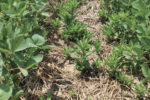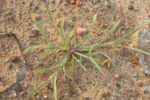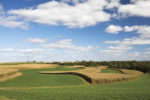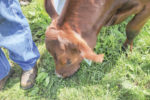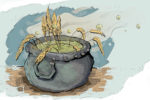Forage Production
The sting of sandburs
Sandburs continue to be a challenge for bermudagrass growers in the Southeast, but with proper management, a healthy stand can overcome the burs.
Read More
Improve feed efficiency through feed management
Forage variability can be attributed to a host of factors – including growing conditions, fertilization protocols, cutting heights, cutting times and storage conditions.
Read More
Quantifying N credits of alfalfa in rotation
We do not have a clear understanding of all the factors influencing N availability from rotation crops like alfalfa.
Read More
Managing for 'both/and': Ecosystems and livestock
We can make greater inroads to benefiting our ecosystems if we see ourselves both as ecosystem stewards and as livestock, grassland and soil health professionals.
Read More
Managing the unknowns for forage safety
Management practices such as spreading out nitrogen applications, irrigation and seed selection for low prussic acid can all reduce risk.
Read More
Four soil test myths to watch for
Soil testing can be complicated, but overcomplicating the results can be confusing and provide you with more information than needed.
Read More
Elevate your manure management to align with 2023’s input projections
The goal of nutrient management is to adequately supply soils and plants with the nutrients necessary to produce food, forage, fiber and cover while minimizing the transport of nutrients to ground and surface waters.
Read More
How should I adjust my hay fertilization due to high fertilizer prices?
With rising fertilizer prices, management practices that improve hay fertilization can make a major difference in the end product.
Read More
